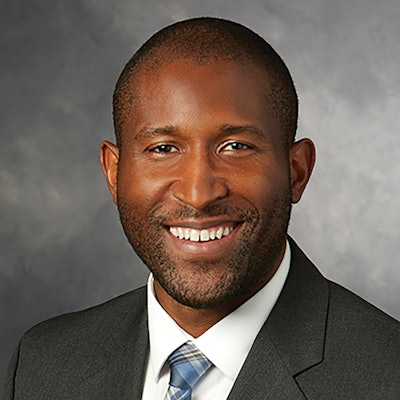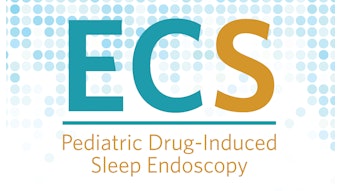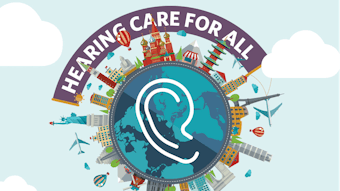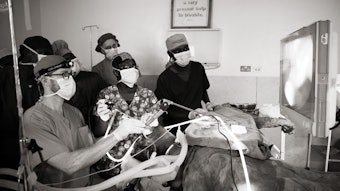Unequal Treatment: How to Move from Detecting to Understanding and Reducing Healthcare Disparities within Otolaryngology
Recently the coronavirus pandemic has illuminated long-standing social, economic, and health inequities in the United States.
Sarah N. Bowe, MD; Karthik Balakrishnan, MD; Uchechukwu C. Megwalu, MD; and Regan W. Bergmark, MD
 Sarah N. Bowe, MD
Sarah N. Bowe, MD
The aforementioned comments and findings emphasize the critical starting point of health disparities work: detection.5 In 2006 Kilbourne et al. proposed a conceptual framework progressing from detection to understanding, followed by reduction. The first phase involves defining health disparities, identifying vulnerable populations, and developing assessment measures. Health disparities can be defined as “observed clinically and statistically significant differences in health outcomes or healthcare use between socially distinct vulnerable and less vulnerable populations that are not explained by the effects of selection bias.”5 Vulnerable populations include any groups that face discrimination because of underlying differences in social status (e.g., race/ethnicity, sex/gender, age, socioeconomic status, literacy). The selection of measures will vary widely but should broadly include process measures, or differences in healthcare use (e.g., insurance, access to care), and outcome measures, or differences in health status (e.g., disease severity, mortality). Over the past decade, numerous studies have identified healthcare disparities within our specialty, yet few have progressed beyond detection to understanding.6
In order to achieve understanding, it is important to recognize the complexity of factors that contribute to healthcare disparities, which can be very context dependent. Thus, while some collective information on health disparities can be shared, there is also a critical need to perform analysis on a more individualized basis, including unique patient, provider, and healthcare system factors. The detailed information that is obtained during the understanding phase can be used to drive the development and implementation of interventions that will ultimately lead to the reduction of healthcare disparities. Following are shared experiences and perspectives from notable leaders within otolaryngology as they work on understanding healthcare disparities within their own patient populations.
 Karthik Balakrishnan, MD, MPH
Karthik Balakrishnan, MD, MPH
Karthik Balakrishnan, MD, MPH
Humans understand the world by categorizing experiences to form cognitive associations.7 We apply these associations to understand subsequent experiences and interpersonal interactions. The result is often inappropriate generalization from specific experiences, or bias, to which clinicians are particularly vulnerable due to the high cognitive demands of our profession.7 Because these biases are the result of the interaction of individuals and the societies in which they live, they also manifest on the societal level as privilege and disadvantage.8
In healthcare, bias, privilege, and disadvantage directly affect health outcomes through every aspect of patient-provider interaction, medical decision-making, patient experience, and treatment adherence.9 Meanwhile multiple studies have demonstrated improved patient-provider interaction metrics when the patient-provider dyad is concordant for race or gender.10
To counter these biases and move toward justice in healthcare, we must reduce both the effects of our personal biases and the systemic privileges and disadvantages experienced by our patients. Awareness of our biases is a critical first step, followed by a mindful approach to altering our cognitive associations.11 Meanwhile, as a specialty and a profession, we must confront biases in how we select, train, and promote colleagues, in order to reduce privilege and disadvantage in who enters and thrives in our specialty. This in turn will increase diversity among clinicians in otolaryngology, conferring downsteam benefits to our patients.12-13
 Uchechukwu C. Megwalu, MD
Uchechukwu C. Megwalu, MD
Sociodemographic disparities are becoming increasingly apparent in head and neck cancer (HNC). In addition to tumor-specific and treatment factors, nonclinical factors—such as race, gender, and socioeconomic status—are known to significantly impact patient outcomes. Of these, race/ethnicity and insurance status have been the most studied. Significant racial disparities exist in HNC outcomes.14-18 Black patients present with more advanced tumors, are less likely to receive appropriate treatment, and have worse survival outcomes than other racial groups, even after adjusting for disease stage and other clinically important factors.15, 16, 19-23 Significant insurance status disparities have also been demonstrated in HNC outcomes. Uninsured and Medicaid patients have worse outcomes compared with commercially insured patients.24-27
Understanding the drivers of sociodemographic disparities is critical for designing and testing interventions aimed at reducing disparities. Some of the racial/ethnic and insurance status differences in outcomes may be explained by differential access to high-quality care. Several studies have shown that certain racial/ethnic populations are more likely than non-Hispanic Whites to receive care in low-quality hospitals.28-31 These racial/ethnic disparities may also be mediated by insurance status. Uninsured and Medicaid patients are also more likely to be treated in low-quality hospitals than commercially insured patients.28, 31 However the role of insurance status and hospital quality as drivers of HNC disparities has not been previously studied. Further investigation of these potential drivers is important, especially as these are actionable targets for interventions addressing HNC disparities.
 Regan W. Bergmark, MD
Regan W. Bergmark, MD
Regan W. Bergmark, MD
The COVID-19 pandemic will exacerbate health disparities for diseases of the head and neck and more broadly through multiple mechanisms.32-34 First, the delays in care suffered by patients throughout the United States due to the pandemic are expected to most severely affect patients who are already at risk of having delayed care, including racial and ethnic minority patients and uninsured and Medicaid patients. Second, job loss is leading to loss of insurance or transitions to insurance programs with less coverage. These changes are expected to lead to worsening discontinuity of care as patients need to delay care or switch healthcare systems. Job loss additionally reduces personal or family resources, making healthcare costs more financially toxic. Third, hospital closures are expected—particularly in rural areas—due to the economic effects of the pandemic, reducing potential points of access. Fourth, the impact of the pandemic on education raises a longer-term risk to the diversity of our workforce.
A population health approach to diseases of the head and neck and leadership from otolaryngologists across the country can help mitigate these effects. Wait times for virtual appointments, in-person appointments, and surgical procedures should be determined based on clinical urgency and analyzed based on race/ethnicity and insurance status to try to ensure equity in real time.32-34 Partnering with community centers and primary care clinics in underserved areas can potentially expedite referrals from these communities. For the long term our specialty should be deeply involved in national discussions on financial incentives in the U.S. healthcare system. For lasting and deep change, insurance coverage should be expanded, and addressing and reducing healthcare disparities should be financially rewarded.35
Acknowledgment: The content of this article was discussed in detail during the AAO-HNSF 2020 Virtual Annual Meeting & OTO Experience Panel Presentation “Unequal Treatment: How HealthCare Disparities Negatively Impact Our Otolaryngology Patients” and was sponsored by both the AAO-HNS Diversity and Inclusion Committee and the AAO-HNS Patient Safety and Quality Improvement Committee.
References
1. American Medical Association. Why racial and ethnic data on COVID-19’s impact is badly needed. April 8, 2020. Accessed September 26, 2020. https://www.ama-assn.org/about/leadership/why-racial-and-ethnic-data-covid-19-s-impact-badly-needed.
2. Mays JC, Newman A. Virus is twice as deadly for Black and Latino people than Whites in NYC. New York Times. Published April 8, 2020. Updated June 26, 2020.Accessed September 26, 2020. https://www.nytimes.com/2020/04/08/nyregion/coronavirus-race-deaths.html.
3. American Medical Association. Top physican orgs urge COVID-19 mortality data by race, ethnicity. April 8, 2020. Accessed September 26, 2020. https://www.ama-assn.org/press-center/press-releases/top-physician-orgs-urge-covid-19-mortality-data-race-ethnicity?utm_source=Selligent&utm_medium=email&utm_term=%25m%25d%25y&utm_content=OTHER_PE_COVID19_MEM_041620&utm_campaign=EVENTS_MMX_Annual2020&utm_uid=3552807&utm_effort=&utm_h=.
4. Association of American Medical Colleges. AAMC calls for enhanced national COVID-19 data collection to better address health disparities. April 10, 2020. https://www.aamc.org/news-insights/press-releases/aamc-calls-enhanced-national-covid-19-data-collection-better-address-health-disparities. Accessed April 19, 2020.
5. Kilbourne AM, Switzer G, Hyman K, Crowley-Matoka M, Fine MJ. Advancing health disparities research within the health care system: a conceptual framework. Am J Public Health. 2006;96:2113-2114.
6. Burks CA, Ortega G, Bergmark RW. COVID-19, disparities, and opportunities for equity in otolaryngology – unequal America. JAMA Otolaryngol Head Neck Surg. Published online September 10, 2020. doi:10.1001/jamaoto.2020.2874
7. Balakrishnan K, Armand EM. The impact of cognitive and implicit bias on patient safety and quality. Otolaryngol Clin North Am. 2019;51(1): 35-46.
8. Understanding race and privilege. National Association of School Psychologists. 2016. https://www.nasponline.org/resources-and-publications/resources-and-podcasts/diversity-and-social-justice/social-justice/understanding-race-and-privilege
9. Blair IV, Steiner JF, Havranek EP. Unconscious (implicit) bias and health disparities: where do we go from here? Perm J. 2011;15(2):71-78.
10. Cooper-Patrick L, Gallo JJ, Gonzales JJ, et al. Race, gender, and partnership in the patient-physician relationship. JAMA. 1999;282(6):583-589.
11. Marcelin JR, Siraj DS, Victor R, Kotadia S, Maldonado YA. The impact of unconscious bias in healthcare: how to recognize and mitigate it. J Infect Dis. 2019;220(Suppl 2): S62-S73.
12. Caper Q, McDougle L, Clinchot DM. Strategies for achieving diversity through medical school admissions. J Health Care Poor Underserved. 2018;29(1):9-18.
13. Poole KG Jr, Jordan BL, Bostwick JM. Mission drift: are medical school admissions committees missing the mark on diversity? Acad Med. 2020;95(3):357-360.
14. Chen AY, Halpern M. Factors predictive of survival in advanced laryngeal cancer. Arch Otolaryngol Head Neck Surg. 2007;133(12):1270-1276.
15. Shavers VL, Harlan LC, Winn D, Davis WW. Racial/ethnic patterns of care for cancers of the oral cavity, pharynx, larynx, sinuses, and salivary glands. Cancer Metastasis Rev. 2003;22(1):25-38.
16. Olarte LS, Megwalu UC. The impact of demographic and socioeconomic factors on major salivary gland cancer survival. Otolaryngol Head Neck Surg. 2014;150(6):991-998.
17. de Graeff A, de Leeuw JR, Ros WJ, Hordijk GJ, Blijham GH, Winnubst JA. Sociodemographic factors and quality of life as prognostic indicators in head and neck cancer. Eur J Cancer Oxf Engl 1990. 2001;37(3):332-339.
18. Schrank TP, Han Y, Weiss H, Resto VA. Case-matching analysis of head and neck squamous cell carcinoma in racial and ethnic minorities in the United States—possible role for human papillomavirus in survival disparities. Head Neck. 2011;33(1):45-53.
19. Saini AT, Genden EM, Megwalu UC. Sociodemographic disparities in choice of therapy and survival in advanced laryngeal cancer. Am J Otolaryngol. 2016;37(2):65-69.
20. Zandberg DP, Liu S, Goloubeva O, et al. Oropharyngeal cancer as a driver of racial outcome disparities in squamous cell carcinoma of the head and neck: 10-year experience at the University of Maryland Greenebaum Cancer Center. Head Neck. 2016;38(4):564-572.
21. Megwalu UC, Ma Y. Racial disparities in oropharyngeal cancer survival. Oral Oncol. 2017;65:33-37.
22. Osazuwa-Peters N, Massa ST, Christopher KM, Walker RJ, Varvares MA. Race and sex disparities in long-term survival of oral and oropharyngeal cancer in the United States. J Cancer Res Clin Oncol. 2015;142(2):521-528.
23. Mahal BA, Inverso G, Aizer AA, Bruce Donoff R, Chuang S-K. Impact of African-American race on presentation, treatment, and survival of head and neck cancer. Oral Oncol. 2014;50(12):1177-1181.
24. Shin JY, Yoon JK, Shin AK, Blumenfeld P, Mai M, Diaz AZ. Association of insurance and community-level socioeconomic status with treatment and outcome of squamous cell carcinoma of the pharynx. JAMA Otolaryngol Neck Surg. 2017;143(9):899-907.
25. Inverso G, Mahal BA, Aizer AA, Donoff RB, Chuang S-K. Health insurance affects head and neck cancer treatment patterns and outcomes. J Oral Maxillofac Surg. 2016;74(6):1241-1247. doi:10.1016/j.joms.2015.12.023
26. Kwok J, Langevin SM, Argiris A, Grandis JR, Gooding WE, Taioli E. The impact of health insurance status on the survival of patients with head and neck cancer. Cancer. 2010;116(2):476-485.
27. Saraswathula A, Megwalu UC. Insurance status and survival of patients with salivary gland cancer. Otolaryngol Head Neck Surg. 2018;159:998-1005.
28. Liu JH, Zingmond DS, McGory ML, et al. Disparities in the utilization of high-volume hospitals for complex surgery. JAMA. 2006;296(16):1973-1980.
29. Dimick J, Ruhter J, Sarrazin MV, Birkmeyer JD. Black patients more likely than whites to undergo surgery at low-quality hospitals in segregated regions. Health Aff (Millwood). 2013;32(6):1046-1053.
30. Huang LC, Ma Y, Ngo JV, Rhoads KF. What factors influence minority use of National Cancer Institute-designated cancer centers? Cancer. 2014;120(3):399-407.
31. Huang LC, Tran TB, Ma Y, Ngo JV, Rhoads KF. Factors that influence minority use of high-volume hospitals for colorectal cancer care. Dis Colon Rectum. 2015;58(5):526-532.
32. Graboyes E, Cramer J, Balakrishnan K, et al. COVID-19 pandemic and health care disparities in head and neck cancer: Scanning the horizon. Head Neck. Published online June 20, 2020. https://onlinelibrary.wiley.com/doi/full/10.1002/hed.26345
33. Burks CA, Ortega G, Bergmark RW. COVID-19, disparities, and opportunities for equity in otolaryngology —unequal America. JAMA Otolaryngol Head Neck Surg. Published online September 10, 2020. https://jamanetwork.com/journals/jamaotolaryngology/fullarticle/2770571
34. Jarman MP, Bergmark RW, Chhabra K, et al. The surgical health services research agenda for the COVID-19 pandemic. Ann Surg. 2020;272(3):e226-e229. doi:10.1097/SLA.0000000000004126
35. DeMeester RH, Xu LJ, Nocon RS, Cook SC, Ducas AM, Chin MH. Solving disparities through payment and delivery system reform: a program to achieve health equity. Health Aff (Millwood). 2017;36(6):1133-1139.




















